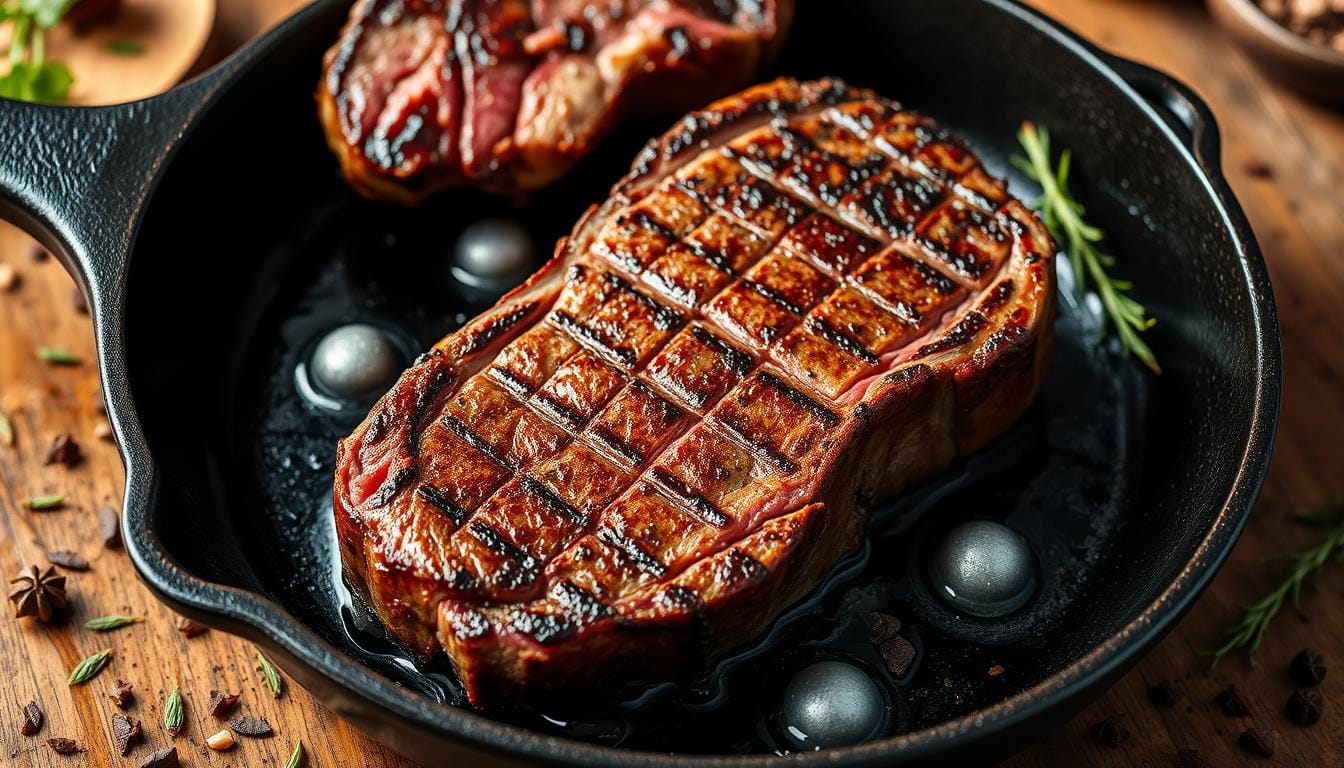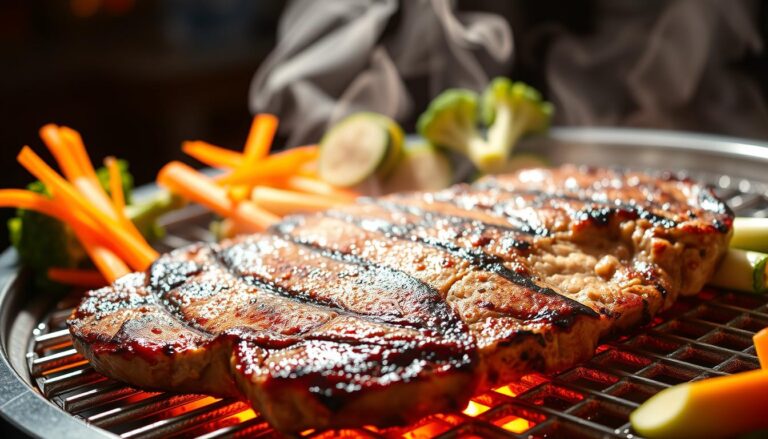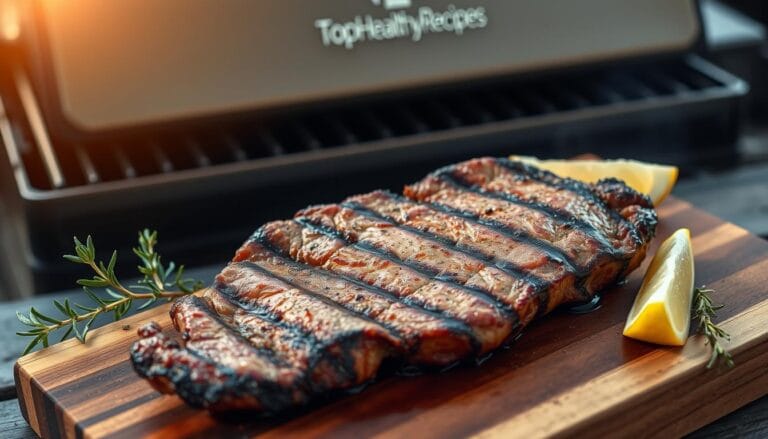Say steak in spanish language Like a Native Speaker
Table of Contents
Say steak in spanish language Like a Native Speaker
When traveling to Spanish-speaking countries, being able to order your favorite dishes can greatly enhance your dining experience. For food enthusiasts, knowing how to say “steak” in Spanish is particularly useful.
There are multiple ways to translate “steak” into Spanish, with variations depending on the region and the specific cut of meat. Understanding these nuances can help you sound more like a native speaker when discussing food.
Mastering food terminology is an essential part of language fluency and cultural understanding. In this guide, we’ll cover the most common translations for “steak” in Spanish, regional variations, and useful phrases to enhance your dining experiences.
Key Takeaways
- Learn the most common Spanish translations for “steak,” including “el bistec” and “el filete.”
- Understand regional variations and specific contexts for usage across Spanish-speaking countries.
- Enhance your dining experiences by knowing how to order steak like a native speaker.
- Discover useful phrases related to steak to improve your language fluency.
- Master food terminology to deepen your cultural understanding.
How to Say “Steak” in Spanish
The Spanish language offers multiple ways to express ‘steak,’ each with its nuances. Understanding these variations can enhance your communication when dining or shopping for meat in Spanish-speaking countries.
The Most Common Translation: “El Bistec”
“El bistec” is the most widely recognized term for steak across Spanish-speaking countries. Pronounced as “bees-tek,” it is derived from the English word “beefsteak.” As a masculine noun, it requires the article “el.” You can use “bistec” in various contexts, such as restaurant menus and everyday conversations.
Alternative Translation: “El Filete”
An alternative translation for steak is “el filete,” which refers to a tenderloin or fillet cut of meat. While “bistec” is used for beef steaks, “filete” can also refer to fillets of fish. For example, you can say “Me gustaría un filete de ternera, por favor” (I would like a beef fillet, please).
| Term | Translation | Pronunciation |
|---|---|---|
| El Bistec | Steak | Bees-tek |
| El Filete | Fillet/Tenderloin | Fee-leh-teh |
Regional Variations of “Steak” in Spanish Language
The term “steak” takes on different forms in Spanish, influenced by local gastronomy and historical contexts. As you delve into the Spanish language, understanding these variations can enrich your vocabulary and cultural insight.
“El Bife” in Bolivia and River Plate Regions
In Argentina, Uruguay, and Bolivia, “el bife” is the preferred term for steak. This masculine noun is commonly used in steakhouses or parrillas. For example, you might order “un bife de chorizo” for a favorite cut.
“La Carne de Res” in Southern Cone
“La carne de res,” meaning “beef meat,” is used in several Southern Cone countries. This feminine noun phrase is utilized when a specific cut isn’t necessary. It’s a more general term that encompasses various beef dishes.
“El Churrasco” in Southern Cone
In countries like Chile, Peru, and parts of Central America, “el churrasco” refers specifically to grilled steak. This term highlights the cooking method and is often associated with outdoor cooking traditions.
| Region | Term Used for Steak | Example Usage |
|---|---|---|
| Argentina, Uruguay, Bolivia | El Bife | “Un bife de chorizo, por favor.” |
| Southern Cone countries | La Carne de Res | “La carne de res es deliciosa.” |
| Chile, Peru, Central America | El Churrasco | “Vamos a hacer un churrasco este fin de semana.” |
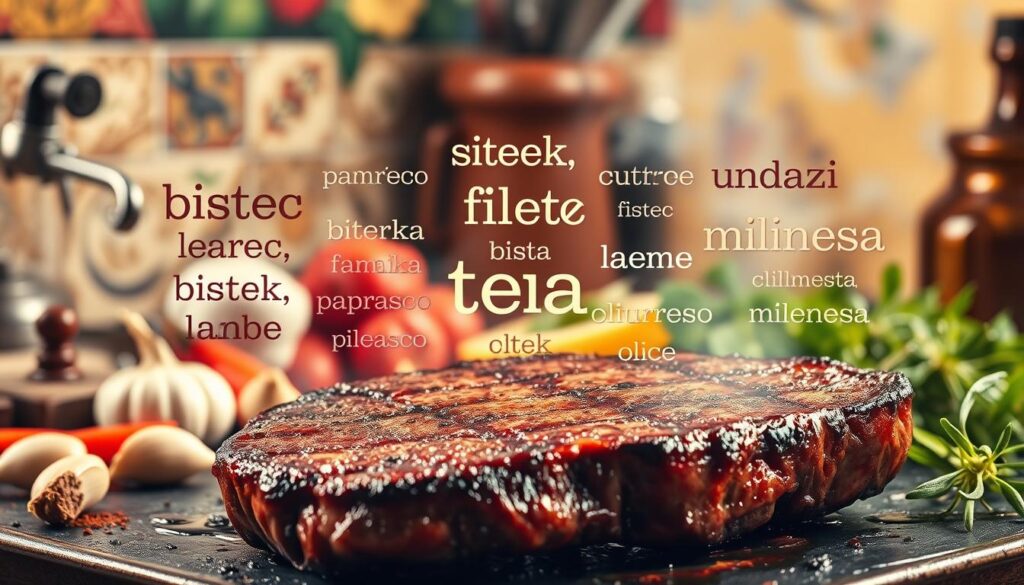
These regional variations reflect the importance of beef in Latin American cuisine, particularly in countries with strong cattle-raising traditions. By learning these terms, you can better appreciate the local culture and communicate effectively during your culinary explorations.
Common Spanish Phrases Related to Steak
Familiarizing yourself with common Spanish phrases related to steak can make a significant difference when dining out. Understanding how to order and describe your preferred steak can enhance your dining experience.
Ordering Steak
When ordering steak at a restaurant, you might be asked, “¿Cómo quieres el bistec?” (How would you like your steak?). You can respond with “Lo quiero vuelta y vuelta” (I want it rare), “a punto” (medium), or “bien cocido” (well-done). Common steak accompaniments include “bistec con papas” (steak with potatoes) and “bistec con puré de papas” (steak with mashed potatoes).
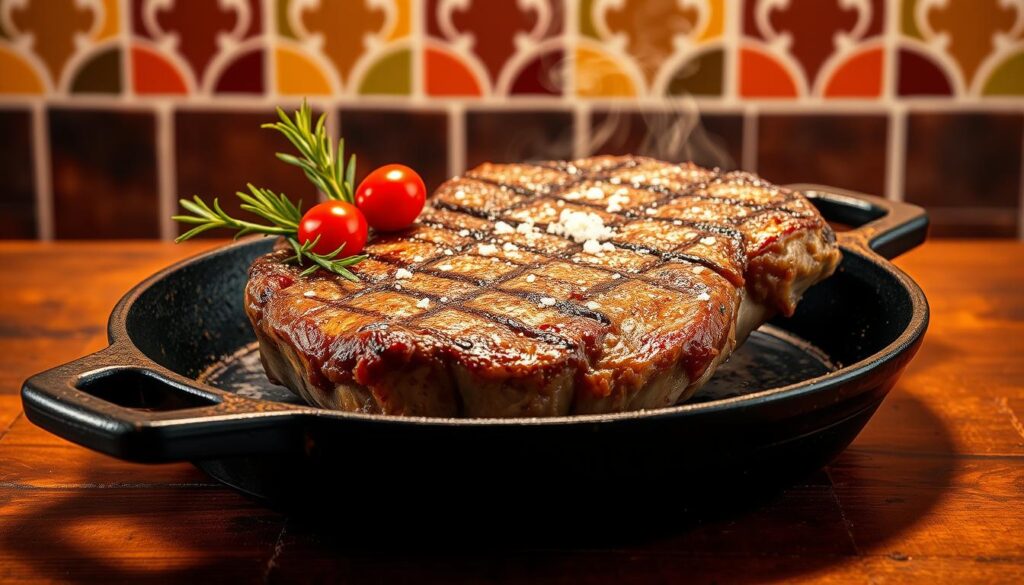
Types of Steak
Different cuts of steak have specific names in Spanish. For example, “falda de res” refers to flank steak, “bistec de lomo de res” is sirloin steak, and “la arrachera” is hanger steak. Knowing these terms can help you order with confidence.
Steak Preparation
Cooking terminology is also essential. Terms like “a la parrilla” (grilled), “a punto” (medium), and “bien cocido” (well-done) are crucial when specifying how you want your steak cooked. Regional specialties like “fajitas de carne” (steak fajitas) and “sándwich de bistec” (steak sandwich) offer a variety of options.
Conclusion: Mastering “Steak” in Spanish Conversation
Now that you’re familiar with the different ways to say ‘steak’ in Spanish, it’s time to put them into practice. You’ve learned that “bistec,” “filete,” “bife,” “carne de res,” and “churrasco” are key translations, each with its own regional nuances.
Understanding these variations is crucial when traveling to different Spanish-speaking countries. To enhance your vocabulary, try role-playing restaurant scenarios or cooking discussions. Mastering food vocabulary like steak terms significantly improves your communication abilities and cultural understanding.
For further learning, explore cookbooks, food blogs, or cooking shows in Spanish. Remember, language learning is an ongoing process, and regular use of new words cements them in your memory. Continue building your language skills by exploring other food-related Spanish vocabulary, and you’ll be confidently discussing and ordering steak like a native Spanish speaker.
FAQ
What is the most common way to say “steak” in Spanish?
Are there any regional variations for “steak” in Spanish?
How do I order steak at a Spanish-speaking restaurant?
What are some common types of steak in Spanish?
Can I use a translation tool to help me with Spanish steak vocabulary?
For more cooking tips, stay connected with us. We also recommend the cookbook Skinnytaste Simple: Easy, Healthy Recipes with 7 Ingredients or Fewer
For more Recipes about Beef?
Did You try our recipe ?
There are no reviews yet. Be the first one to write one.
